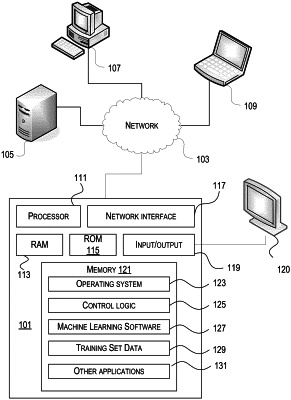| CPC G06F 21/45 (2013.01) [G06F 16/24 (2019.01); G06F 40/40 (2020.01); G06N 3/04 (2013.01); H04L 63/08 (2013.01); H04L 63/102 (2013.01)] | 20 Claims |

|
1. A method comprising:
receiving, by a computing device, a request for access to a first account associated with a user, wherein the first account is managed by a first organization;
querying a transactions database for first account data corresponding to the first account, wherein the first account data indicates one or more first transactions conducted via a first payment method;
receiving, from a second computing device, second account data corresponding to a second account associated with the user, wherein the second account data indicates one or more second transactions conducted via a second payment method, and wherein the second account is managed by a second organization different from the first organization;
generating standardized merchant names for the first account data and the second account data by processing the second account data based on a format of the first account data;
identifying, based on comparing the first account data and the processed second account data using the standardized merchant names, one or more second transactions, wherein the one or more second transactions are unique to the second account;
generating, based on the first account data, a synthetic transaction, wherein the synthetic transaction is configured to be different from both the one or more first transactions and the one or more second transactions unique to the second account;
generating, based on the synthetic transaction, an authentication question;
receiving a response to the authentication question; and
providing, based on the response to the authentication question, access to the first account.
|